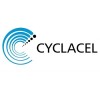Efficacy Study of Oral Sapacitabine to Treat Acute Myeloid Leukemia in Elderly Patients
Acute Myeloid Leukemia

About this trial
This is an interventional treatment trial for Acute Myeloid Leukemia
Eligibility Criteria
Inclusion Criteria:
- A histologically or pathologically confirmed diagnosis of AML based on WHO classification which is previously untreated by systemic therapy or is in first relapse after achieving a complete remission to initial induction, consolidation and/or maintenance therapy or MDS with IPSS scores of intermediate -2 or higher risk risk which has been previously treated with hypomethylating agents
- Age 70 years or older for AML and 60 years or older for MDS
- Eastern Cooperative Oncology Group (ECOG) performance status 0-2
- Adequate renal function defined as serum creatinine equal to or less than 1.5 x upper limit of normal (ULN)
- Adequate liver function defined as total bilirubin or direct bilirubin equal to or less than 1.5 x ULN; alanine aminotransferase (ALT or SGPT) equal to or less than 2.5 x ULN (5 x ULN if tumor has affected the liver)
- Life expectancy reasonably adequate for evaluating the treatment effect
- Patient must be able to swallow capsules
- Patients must be at least 2 weeks from prior systemic therapy, radiation therapy, major surgery, or other investigational therapy, and have recovered from clinically significant toxicities of these prior treatments
- All men and women of reproductive potential must agree to practice effective contraception for 4 weeks prior to study entry, during the entire study period and for one month after the study unless documentation of infertility exists
- Ability to understand and willingness to sign the informed consent form
Exclusion Criteria:
- AML is of the sub-type of acute promyelocytic leukemia
- Having received more than one induction systemic therapy for AML or having received a standard dose or high dose ara-C containing regimen for MDS
- Patients with known central nervous system (CNS) involvement by leukemia
- Uncontrolled intercurrent illness including, but not limited to ongoing or active infection, active cancer(s) other than AML, symptomatic congestive heart failure, unstable angina pectoris, cardiac arrhythmia, or psychiatric illness/social situations that would limit compliance with study requirements. Patients receiving intravenous antibiotics for infections that are under control may be included in this study
- Known to be HIV-positive
Sites / Locations
- University of Alabama at Birmingham
- UCLA Division of Hematology-Oncology
- Stanford Hospitals and Clinics
- Winship Cancer Institute
- Northwestern University Feinberg School of Medicine
- Rush University Medical Center
- University of Chicago Cancer Research Center
- University of Nebraska Medical Center
- The Cancer Center at Hackensack University Medical Center
- Roswell Park Cancer Institiute
- New York Medical College
- Penn State Milton S. Hershey Medical Center
- Hospital of the University of Pennsylvania
- Vanderbilt U Medical Center
- The University of Texas MD Anderson Cancer Center
Arms of the Study
Arm 1
Arm 2
Arm 3
Arm 4
Arm 5
Arm 6
Arm 7
Arm 8
Arm 9
Experimental
Experimental
Experimental
Experimental
Experimental
Experimental
Experimental
Experimental
Experimental
A sapacitabine
B sapacitabine
C sapacitabine
D sapacitabine
E sapacitabine
F sapacitabine
G sapacitabine
H sapacitabine
I sapacitabine
200 mg b.i.d. x 7 days every 3-4 weeks
300 mg b.i.d. x 7 days every 3 - 4 weeks
400 mg b.i.d. x 3 days/week x 2 weeks every 3 - 4 weeks
200 mg b.i.d. x 7 consecutive days every 4 weeks
300 mg q.d. x 7 consecutive days every 4 weeks
300 mg b.i.d. x 3 consecutive days per week for 2 weeks every 4 weeks
200 mg b.i.d. x 7 consecutive days every 4 weeks
300 mg q.d. x 7 consecutive days every 4 weeks
100 mg q.d. x 5 consecutive days per week for 2 weeks every 4 weeks
Outcomes
Primary Outcome Measures
Secondary Outcome Measures
Full Information
1. Study Identification
2. Study Status
3. Sponsor/Collaborators
4. Oversight
5. Study Description
6. Conditions and Keywords
7. Study Design
8. Arms, Groups, and Interventions
10. Eligibility
12. IPD Sharing Statement
Learn more about this trial
